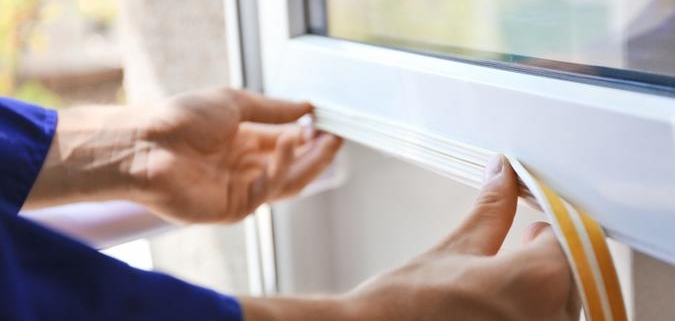Have you looked at your heating bill lately? I’m sure you’ve noticed that costs are generally higher this year than previous years. The cost of natural gas continues to rise, hurting most homeowner’s wallets. However properly maintaining your windows can help lower your monthly energy bills throughout the year.
Check Your Windows for Air Leaks
This is as simple as it gets but also the most important. The easiest way to discover any window air leakage problems is to feel around the window with your hands. We’d recommend doing this at the bare minimum, yearly, to make sure you’re not wasting valuable dollars because of new leaks.
Window air leakage is common and can often be addressed by simply ensuring that locks are tight and secured and the weather stripping is intact. Make sure to pay attention to window tracks, insects and general debris tend to build up there potentially causing gaps.
Seal Any Window Cracks and Gaps
For you DIYers out there, if the window crack or gap is relatively small you may be able to fix it with some simple DIY sealing. Homeowners can typically seal leaks around windows and doors with inexpensive items like caulk, low-expanding window foam, or even temporary seasonal window films.
This can lead to significant reduction in your heating bill.
Steve Hoffins, VP at Cornerstone Building Brands, a manufacturer of Simonton and Ply Gem Windows says, “The U.S. Department of Energy found that sealing air leaks in a home can reduce energy expenses by up to 30%. While air leaks around windows and doors are not the biggest energy-saving strategy, it can definitely add up to a lot of savings, especially in older homes with deteriorating windows or doors. It can also have a profound impact on the comfort of the home by eliminating drafts and keeping room temperatures more consistent.”
Window Replacement to Lower Energy Costs
For bigger leaks, cracks, or gaps a simple DIY sealing solution probably won’t be the answer. If you notice issues like air leakage, peeling paint, difficult operation and/or condensation between the panes of the window, it’s probably time to update. Also, if you currently have windows that do not have insulated double-pane or triple-pane glass, you should definitely consider window replacement which is probably more cost-effective than you think. A recent 2021 Cost vs. Value report listed vinyl window replacement as one of the best values across all home improvement projects, with an ROI of more than 68%. In addition replacing your old windows for new energy efficient windows qualifies you for Federal Tax Credits and several Local and State Tax Rebates.
Choose Vinyl Windows for Ultimate Energy Efficiency
Vinyl, as the primary window material, is ideal due to its long-lasting, strong and moisture-resistant properties. Vinyl doesn’t transfer heat easily, making it super energy-efficient. Vinyl windows are designed with frames that provide the best possible sealing, saving homeowners energy and money.
If you are looking for the best, most energy-efficient windows for your home, simply click on the Get Free Estimate at the top of the screen or fill out our contact form to request a free window replacement quote.
- Simonton Windows vs Andersen Windows: The Best Brand Is… - March 11, 2024
- OKNA Windows vs Andersen: Which Brand is Best for Your Home? - March 5, 2024
- Milgard Windows vs Andersen: The Better Choice is Clear? - March 4, 2024



Leave a Reply
Want to join the discussion?Feel free to contribute!